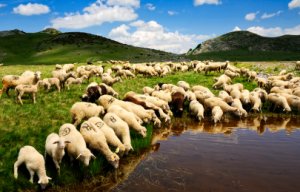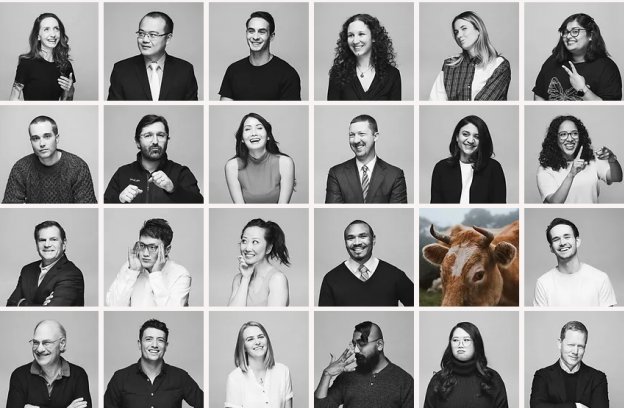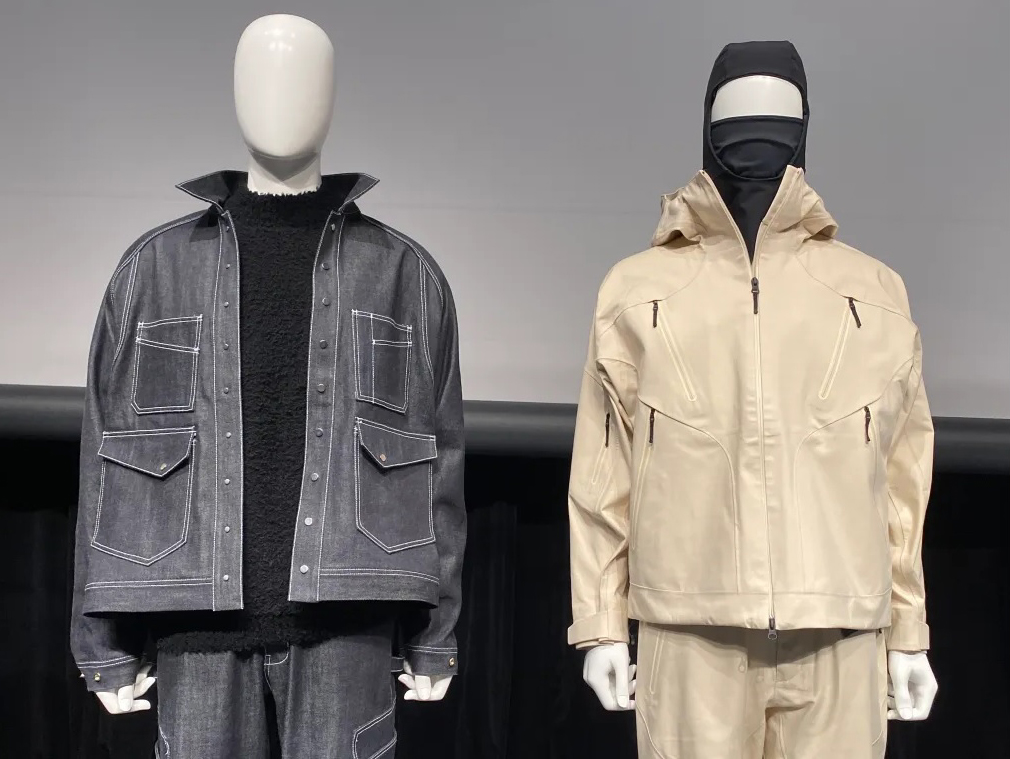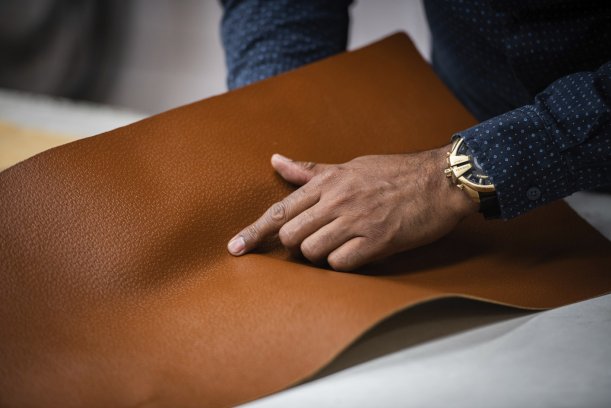
NSF International to lead ROC programme implementation
Catherine Tubb, head of textiles for UK consultancy Planet Tracker, explains how a new generation of bio-based materials are permanently restyling the leather industry.

18th May 2022
Innovation in Textiles
|
London
In its recent Rethinking Food and Agriculture 2020-2030 report, RethinkX, an economic disruption think-tank, proposes that new technologies will not just disrupt food proteins like those found in meat or milk, but also proteins found in a whole host of products, like leather and other materials.
This is because these new technologies have the potential to give us access to cheaper and better alternatives to many textiles and materials we use today and the winners will always be those that are superior and cheaper, meaning the disruption is inevitable from an economic point of view. However, unlike food, the barriers to entry are easier for materials companies – this will be a B2B driven disruption, with no regulation to hinder the growth of the new technologies.
The disruptive companies in the next generation material space are not dissimilar to those currently taking the food world by storm. There are new plant-based alternatives, ranging from the use of new materials such as pineapple leaves by Piñatex, or new manufacturing routes for biobased materials like Natural Fiber Welding, to fermentation-derived alternatives like Bolt Thread’s Mylo, Mycoworks’ Reishi, and Spiber’s precision fermented Brewed Protein, as well as cellular agriculture-based products, with VitroLabs, for example, growing hides from cells. These technologies will work in parallel to disrupt traditional materials.

Economic led disruption
Products from the cow like milk, meat and leather are particularly susceptible to this disruption. The industries are interlinked, in that dairy cows can be used for beef and leather can come from dairy or beef stock, but these are the minority. In the main, the industries operate separately, and with highly volatile margins. It is likely that any disruption to beef and milk will also lead to the disruption of leather.
Hides are limited in size, quality is highly variable, the supply chain is low-margin with a highly fragmented value-chain and the production time is very long
Cow-based leather is the most abundant animal-derived material out there. Today, the leather industry is an $80 billion manufacturing sector, with exports of hides and skins alone exceeding $5 billion annually. The annual global leather goods market was valued at almost $400 billion in 2020, with around half being footwear.
Bovine leather makes up about 65% of the global leather market and the primary raw materials for the leather industry are hides which are a waste product from the meat processing industry.
Inefficiency
The leather industry is deeply inefficient. Hides are limited in size, quality is highly variable, the supply chain is low-margin with a highly fragmented value-chain and the production time is very long. As such, there is a lot of waste – not only from the processing part, but also simply in dealing with the non-conventional shapes that animal skins come in. This leads to wastage – in some cases about 30-40% of a cow hide by area and almost 80% by weight is lost in this process. In weight terms this is even more significant – in leather processing one metric ton of raw material is converted into only 200kg of usable leather product. The quality variability means hides are graded from A (the best) to E (the least good), with only 2-4% of hides being graded A. As a result, A grade hides are sold out years in advance, as the luxury goods houses seek to secure their supply. The processing of hides also requires significant amounts of water and can produce toxic waste effluent.

However, in recent years the mismatch between the desire for meat and the desire for leather has meant that in some regions, we see buffalo being bred predominantly for their hides, while in other regions the hides are being thrown away, as they have no economic use. It is the supply and demand imbalances between the parts of the cow that leads to economic imbalances. In another twist, the growing improvement in faux leather – plastic-based leather – has contributed to this change in supply-demand dynamics.
Improving technologies
One of the first faux leathers was made of layered and treated paper pulp. Called Presstoff, it came to prominence in World War I in Germany due to the rationing of animal-based leather. Since then, technologies have continued to get better.
While the quality is not quite on a par with animal leather for some uses, faux leathers are far cheaper – synthetic (plastic-based) alternative leathers are about a third the cost of animal-based leather. Today about two thirds of the overall “leather” market by volume and a third by value is taken up with these alternative leathers. As such, the synthetic leather market is currently worth about $28 billion.
This growth has not come without consequences. Synthetic, faux or vegan leathers are predominantly made of plastic. This comes with all the environmental downsides of any plastic-based material, derived from fossil fuels. Many of the next-gen materials, however, are bio-based, cheaper and in many ways better. How we determine if a material is better than another, however, depends on a variety of factors – durability and aesthetics, as well as how a material performs on sustainability metrics.
Profit
There are very few, if any, instances where consumers would purchase a hide directly from a cow, or even a sheet of tanned leather. This is because companies, not consumers, decide what raw materials to use in their products. Companies seek to maximise revenue – lower their input costs while still keeping the quality high enough so they can continue to make a profit. Companies will switch to a different raw material as soon as there is an economically viable alternative. Furthermore, since materials typically go on the body instead of inside it, there are far fewer regulatory hurdles and personal trepidations – like emotional or cultural attachment – that could arise compared to food. Because of this, and because of the high price tags of many products, the barrier to entry is far lower and thus the bulk of the disruption of materials could very well occur before the disruption of food.
Proteins
Another way to think about this is that leather is often an ingredient in the end product sold to consumers, like shoes, handbags or the seating interior of a car. With alternative leathers, we are not just seeing products made from only one new or old technology, but we are seeing biotechnology used to enhance other biobased materials, so-called “bio-alloys”. Using these proteins as ingredients and building the materials up using technology in new ways comes with property enhancing benefits like better colour-fastness, with implications for dye run-off, for example.
Today about two thirds of the overall “leather” market by volume and a third by value is taken up with these alternative leathers. As such, the synthetic leather market is currently worth about $28 billion
The major driver of disruptions is economic, but there are other influencing factors that affect the adoption of new products. With leather, depending on the application, properties such as thickness, suppleness, finish, durability, permeability, size, warmth etc., are all important. Leather from cows, however, is constrained by biology. The glacial pace of evolution limits improvements that can be made to its properties. Improvements in processing technologies can only go so far. Not so for leather produced through new technologies.
Endless possibilities
With next-gen materials the possibilities are endless. There is so much more customisation that can occur because the raw materials are individual proteins and fibres that can be assembled in an infinite number of ways. There is also no reason that the modern products that replace leather goods need to be made using bovine proteins – they just need to replace (or exceed) the old product’s function. More likely than not, leather goods will be replaced by materials that are far superior in every way. What is impossible for cows to produce, becomes possible. Materials of any size or texture, with any properties desired like changing colour with the temperature or glowing in the dark are not science fiction – there are many proteins in nature that have far better properties than bovine collagen. Spider silk protein, for example, is stronger than steel, but farming spiders is close to impossible. But with new technology it becomes possible – it could for example be used for highly durable covers for car seats, or hard-wearing clothing or unbreakable ropes.
This is why, as soon as costs and capacity allow, these next generation products will capture market share quickly.

The S-curve
What happens if the disruption of leather is faster than expected?
History tells us that all technology adoption follows an S-curve. Why should next generation leather be any different? At the same time, every other part of the cow is seeing the development of good enough and cheap enough alternatives. If any one of these developments happens quicker than expected, this would have knock on effects for all parts of the cow. If you take away the revenue contributed by, for example, leather, the cost of the cow falls on fewer components, pushing up prices. This in turn changes the cost equation for other next-gen materials and the effect can quickly magnify as individual components are substituted, in turn leaving less and less of the cow as a valuable output.
Supply and demand
Because animals have a fixed composition, farmers and meatpackers cannot adjust production to compensate. In fact, if meatpackers can’t sell a certain part of the animal to secondary processors or consumers, they can raise the price of the other parts, cut processing costs, or pay farmers less for the animal. To balance, farmers may then need to adjust the size of their herd, purchase lower-cost inputs or alter their timelines – none of which can happen overnight. Changes in the supply or demand of any one part affect the economics of all the other parts even if the products are supplying different industries. New technologies have the flexibility and adaptability to change these ratios immediately.
Margins
Materials will be a crucial part of this process because, while with cattle, the value of the hide is worth 2-5% of a slaughtered steer’s value, a relatively small amount, (the beef is worth over 90%), the loss of this additional revenue could be significant. Profit margins in the beef cattle industry are volatile and in single digits.
If the leather industry shifts to next-gen leathers, this would mean reduced demand for cattle hides and thus a 2-5% drop in the amount of money earned per animal – leaving the meatpacker with damaged margins. While an instantaneous and complete disruption is unlikely to occur, a prolonged decrease in the demand for cattle hides will have a serious impact on the profits of meatpackers and therefore of farmers. With demand for all other by-products and beef simultaneously being chipped away, animal agriculture doesn’t stand a chance in the longer term.

Business intelligence for the fibre, textiles and apparel industries: technologies, innovations, markets, investments, trade policy, sourcing, strategy...
Find out more